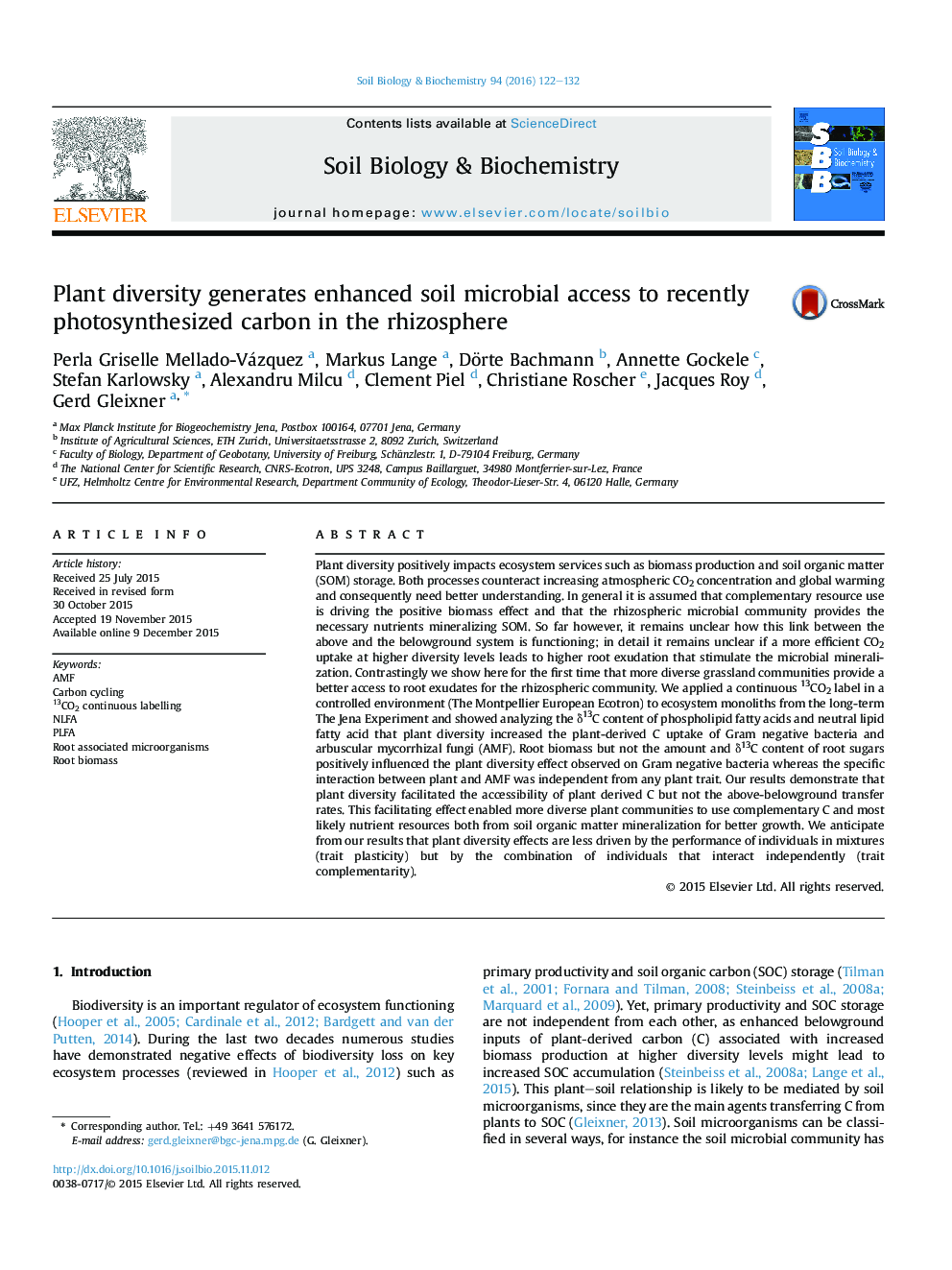| کد مقاله | کد نشریه | سال انتشار | مقاله انگلیسی | نسخه تمام متن |
|---|---|---|---|---|
| 8363612 | 1542590 | 2016 | 11 صفحه PDF | دانلود رایگان |
عنوان انگلیسی مقاله ISI
Plant diversity generates enhanced soil microbial access to recently photosynthesized carbon in the rhizosphere
ترجمه فارسی عنوان
تنوع گیاهی باعث افزایش دسترسی میکروبی خاک به کربن اخیرا فتوسنتز شده در ریزوسفر شده است
دانلود مقاله + سفارش ترجمه
دانلود مقاله ISI انگلیسی
رایگان برای ایرانیان
موضوعات مرتبط
علوم زیستی و بیوفناوری
علوم کشاورزی و بیولوژیک
دانش خاک شناسی
چکیده انگلیسی
Plant diversity positively impacts ecosystem services such as biomass production and soil organic matter (SOM) storage. Both processes counteract increasing atmospheric CO2 concentration and global warming and consequently need better understanding. In general it is assumed that complementary resource use is driving the positive biomass effect and that the rhizospheric microbial community provides the necessary nutrients mineralizing SOM. So far however, it remains unclear how this link between the above and the belowground system is functioning; in detail it remains unclear if a more efficient CO2 uptake at higher diversity levels leads to higher root exudation that stimulate the microbial mineralization. Contrastingly we show here for the first time that more diverse grassland communities provide a better access to root exudates for the rhizospheric community. We applied a continuous 13CO2 label in a controlled environment (The Montpellier European Ecotron) to ecosystem monoliths from the long-term The Jena Experiment and showed analyzing the δ13C content of phospholipid fatty acids and neutral lipid fatty acid that plant diversity increased the plant-derived C uptake of Gram negative bacteria and arbuscular mycorrhizal fungi (AMF). Root biomass but not the amount and δ13C content of root sugars positively influenced the plant diversity effect observed on Gram negative bacteria whereas the specific interaction between plant and AMF was independent from any plant trait. Our results demonstrate that plant diversity facilitated the accessibility of plant derived C but not the above-belowground transfer rates. This facilitating effect enabled more diverse plant communities to use complementary C and most likely nutrient resources both from soil organic matter mineralization for better growth. We anticipate from our results that plant diversity effects are less driven by the performance of individuals in mixtures (trait plasticity) but by the combination of individuals that interact independently (trait complementarity).
ناشر
Database: Elsevier - ScienceDirect (ساینس دایرکت)
Journal: Soil Biology and Biochemistry - Volume 94, March 2016, Pages 122-132
Journal: Soil Biology and Biochemistry - Volume 94, March 2016, Pages 122-132
نویسندگان
Perla Griselle Mellado-Vázquez, Markus Lange, Dörte Bachmann, Annette Gockele, Stefan Karlowsky, Alexandru Milcu, Clement Piel, Christiane Roscher, Jacques Roy, Gerd Gleixner,
